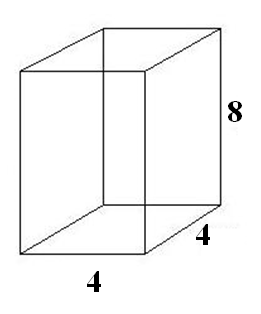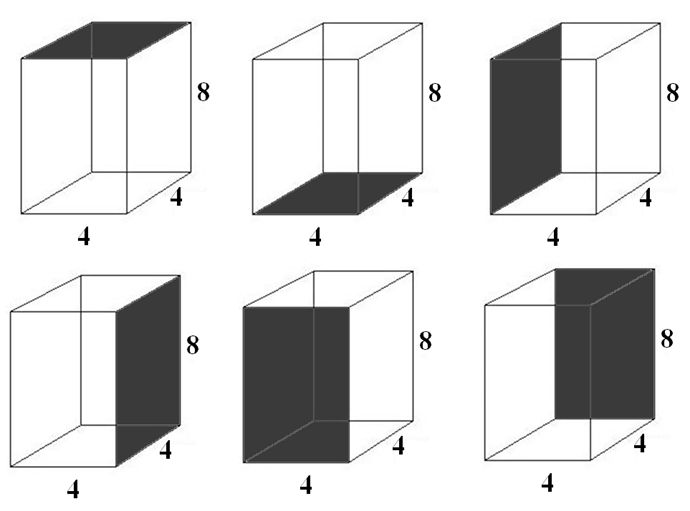
|
Figure 1. |
|---|
Above we have a representation of a prism. What does it mean to find its surface area?

|
Figure 2. |
|---|
As displayed above, the prism has 6 surfaces. To find the surface area, we find the area of each of the six surfaces, then add everything together to come up with the total surface area. Luckily, we have an equation that lets us do everything in one step:
| Surface Area of a Prism |
|---|
|
The surface area of a prism is found by the equation: Surface Area = 2((Length * Width) + (Length * Height) + (Width * Height)) |
So, for our prism:
Surface Area = 2((4 * 4) + (4 * 8) + (4 * 8))
Surface Area = 2((16) + (32) + (32))
Surface Area = 2(80)
Surface Area = 160